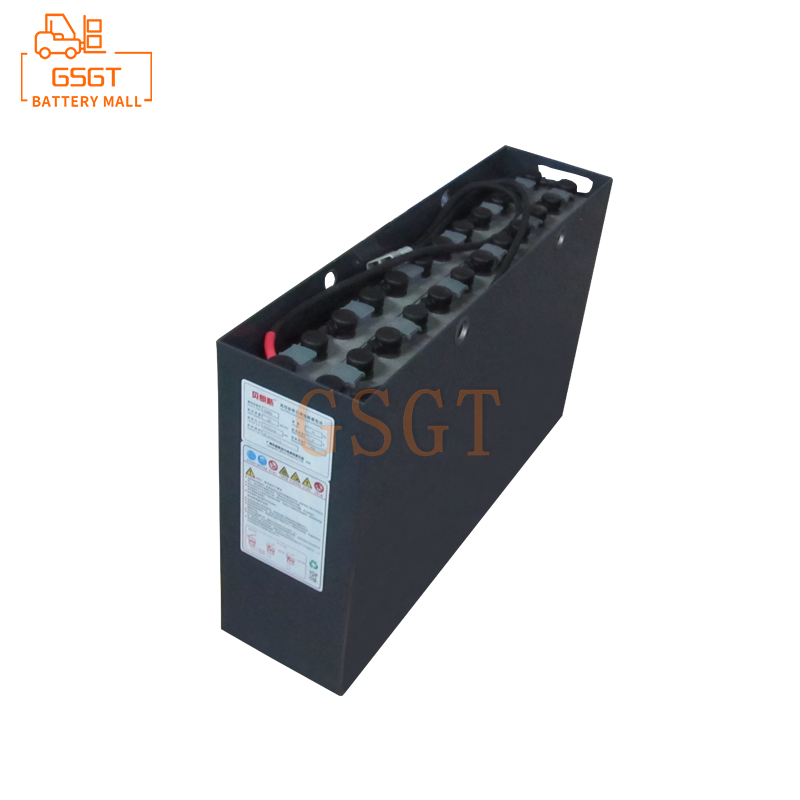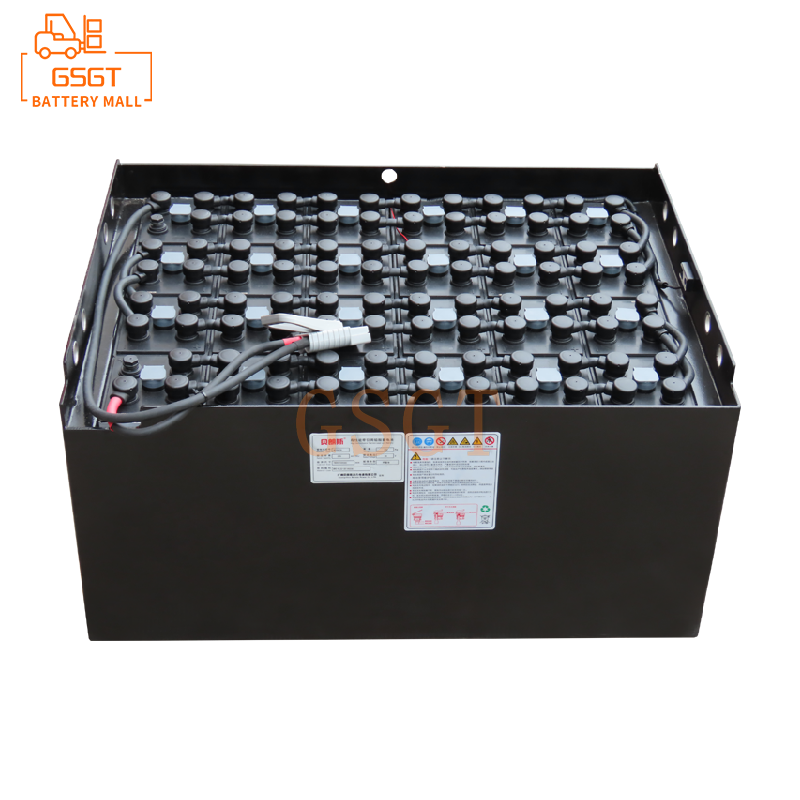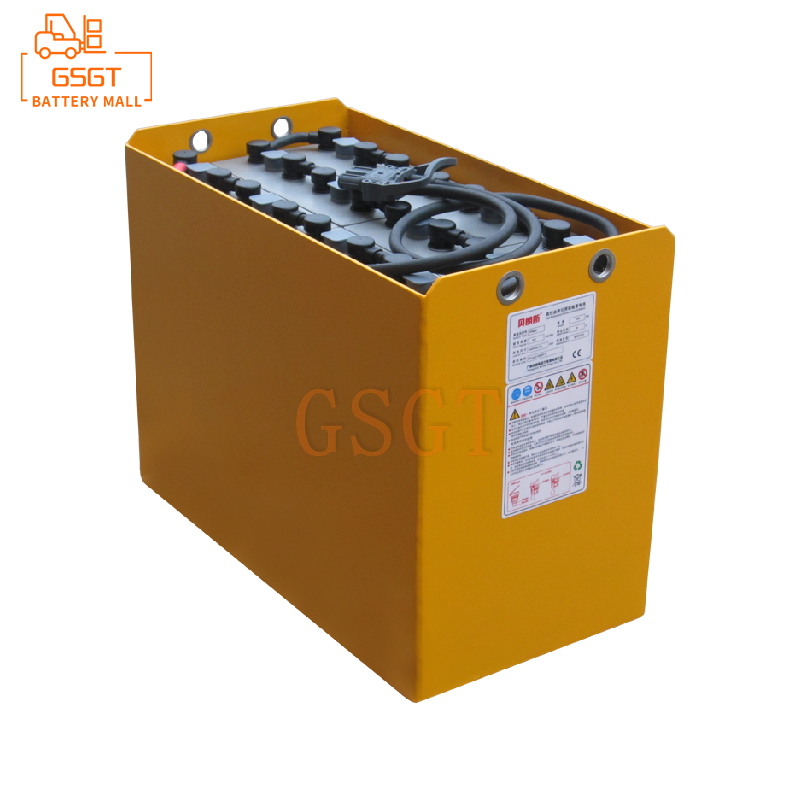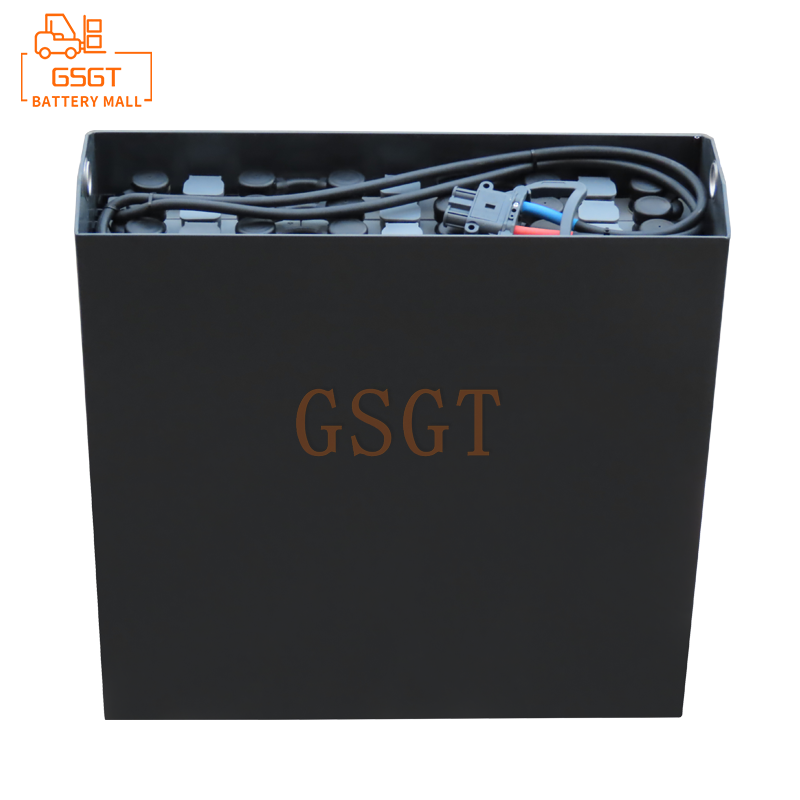Time:2025-06-17 10:08:08
Browse:632
Introduction
In modern logistics and industrial production, forklifts, as important material handling equipment, their operational efficiency and stability directly affect the entire production process. The performance of lead-acid batteries, the power source of forklifts, under frequent start-stop conditions, has become a key factor in determining whether forklifts can operate efficiently and reliably. Frequent start-stop conditions pose numerous challenges to forklift lead-acid batteries, such as high current impact, battery heating, and intensified plate corrosion. These issues not only affect the battery's service life but may also lead to a decrease in forklift power, operational failures, and an increase in the operating costs of enterprises. Therefore, it is of great practical significance to have an in-depth understanding of the working characteristics of forklift lead-acid batteries under frequent start-stop conditions and take effective countermeasures.
Analysis of the Working Principle and Frequent Start-Stop Conditions of Lead-Acid Batteries in ForkLifts
Working principle
The operation of lead-acid batteries is based on the REDOX reaction between lead and sulfuric acid. During the charging process, electrical energy causes the lead sulfate on the positive plate to be oxidized to lead dioxide, while the lead sulfate on the negative plate is reduced to lead. At the same time, the concentration of sulfuric acid in the electrolyte increases. During discharge, the reaction proceeds in reverse. The battery converts chemical energy into electrical energy for output, providing power for the forklift's motor. At this point, the active substances on the positive and negative plates gradually transform into lead sulfate, and the concentration of sulfuric acid in the electrolyte decreases.
Characteristics of frequent start-stop working conditions and their impact on batteries
Under frequent start-stop conditions, forklifts need to start, accelerate, stop and turn frequently within a short period of time. This makes lead-acid batteries face a series of special challenges:
1. ** High Current impact ** : At the moment a forklift starts, the motor requires a large starting current to overcome the vehicle's inertia and load, which causes the battery to output a large current instantaneously. For instance, when a regular electric forklift starts up, the discharge current of the battery may reach several times the rated current. Frequent high-current impacts will intensify the chemical reactions inside the battery, generating a large amount of heat, accelerating the shedding of active substances on the plates and the corrosion of the plates, thereby shortening the battery's service life.
2. ** Battery heating ** : The high current discharge during frequent starts and stops and the heat generated by the chemical reactions inside the battery, if not dissipated in time, will cause the battery temperature to rise. Excessively high temperatures will further accelerate the self-discharge rate of the battery, reduce its capacity, and also speed up the evaporation and drying of the electrolyte, affecting the battery's performance and lifespan. Studies have shown that for every 10℃ increase in battery temperature, its self-discharge rate approximately doubles.
3. ** Plate sulfation ** : Under frequent start-stop conditions, the battery is often in a state of shallow charging and shallow discharging. The lead sulfate on the plates cannot be fully converted into active substances. Over time, a dense layer of lead sulfate crystals will form on the surface of the plates, which is known as plate sulfation. Sulfation of the plates will increase the internal resistance of the battery, reduce the charging and discharging efficiency of the battery, and in severe cases, even lead to battery failure.
Technical measures for dealing with frequent start-stop working conditions
Battery design optimization
1. ** Plate Material and Structure Improvement ** : The adoption of new plate materials, such as lead-calcium alloy, can enhance the corrosion resistance of the plates and improve their stability under frequent high-current discharge conditions. Meanwhile, optimize the structure of the plates and increase their surface area, for example, by adopting a tubular plate structure. The tubular plate wraps the active material inside the tube, which can effectively reduce the shedding of the active material, improve the high-current discharge capacity and cycle life of the battery. Compared with the traditional flat plate type, the service life of the tubular plate type can be extended by 20% to 30% under frequent start-stop conditions.
2. ** Electrolyte Formula Adjustment ** : Develop an electrolyte formula that is suitable for frequent start-stop conditions. For instance, increasing the concentration of sulfuric acid in the electrolyte can enhance the battery's discharge performance. However, it is necessary to pay attention to controlling the concentration range to avoid excessive corrosion of the plates. In addition, adding some special additives, such as stannous sulfate, can inhibit the formation of sulfation on the plates, improve the charging and discharging performance of the battery, and extend the battery life.
3. ** Heat Dissipation and Thermal Management Design ** : In the design of the battery casing, materials with better heat dissipation performance, such as aluminum alloy, are adopted to enhance the battery's heat dissipation efficiency. Meanwhile, heat dissipation channels or heat sinks should be set up inside the battery to promptly dissipate the heat generated by the battery. Some advanced lead-acid batteries for forklifts are also equipped with an intelligent thermal management system, which can automatically adjust the speed of the cooling fan or start the refrigeration device according to the battery's temperature, ensuring that the battery operates within an appropriate temperature range.
Optimization of the charging management system
1. ** Application of Intelligent Charging Algorithms ** : Adopt intelligent charging algorithms, such as pulse charging and adaptive charging, etc. Pulse charging, by periodically applying pulse current, can eliminate sulfides on the surface of the plates during the charging process, improve charging efficiency, and reduce damage to the battery at the same time. Adaptive charging automatically adjusts the charging current and voltage based on the real-time status of the battery, such as voltage, current, temperature and other parameters, to achieve precise charging of the battery, avoid overcharging and undercharging, and extend the battery life.
2. ** Equalization Charging Technology ** : For forklift lead-acid battery packs composed of multiple individual cells, due to the differences in manufacturing processes and usage environments among each individual cell, under frequent start-stop conditions, the charging and discharging states of each individual cell are prone to inconsistency. Equalization charging technology can monitor and control the charging of each individual battery separately, making the power of each individual battery tend to be consistent and avoiding the impact on the performance and lifespan of the entire battery pack due to overcharging or undercharging of individual batteries. Through equalization charging, the service life of the battery pack can be extended by 15% to 20%.
3. ** Matching of Charging equipment with battery ** : Select charging equipment that matches the lead-acid battery of the forklift to ensure that the output voltage, current and other parameters of the charging equipment are in line with the charging requirements of the battery. Meanwhile, regular maintenance and calibration of the charging equipment should be carried out to ensure the stability and accuracy of its performance. Mismatched charging equipment may lead to insufficient or overcharging of the battery, seriously damaging the battery's performance and lifespan.
Daily usage and maintenance strategies
Plan the forklift operation process reasonably
1. ** Reduce unnecessary start and stop frequency ** : By optimizing the operation path and task allocation of forklifts, avoid frequent unnecessary start and stop operations of forklifts during the working process. For instance, when handling goods in a warehouse, it is necessary to plan the handling routes in advance, complete the handling tasks of multiple goods at once, and reduce the number of round trips and the frequency of starts and stops of forklifts within the warehouse. According to statistics, reasonable planning of the operation process can reduce the start and stop frequency of forklifts by 20% to 30%, thereby effectively lowering battery wear and tear.
2. ** Control the start and stop speed ** : When starting and stopping the forklift, try to operate smoothly and avoid sudden acceleration and sudden braking. Sudden acceleration will cause the battery to output a large current instantaneously, increasing the burden on the battery. Sudden braking will instantly convert the kinetic energy of the forklift into heat energy and consume it, making energy recovery impossible. Smooth start and stop operations can reduce the current impact on the battery, extend the battery life, and also help improve the driving safety of forklifts and the stability of goods handling.
Regular maintenance and inspection
1. ** Electrolyte Inspection and Replenishment ** : Regularly check the electrolyte level and density of the battery. Under frequent start-stop conditions, the electrolyte of the battery is consumed relatively quickly. When the liquid level drops below the minimum scale line, distilled water or dedicated electrolyte replenishment solution should be replenished in a timely manner. Meanwhile, use a hydrometer to measure the density of the electrolyte to ensure it is within the normal range. Both excessively high and low electrolyte density can affect the performance and lifespan of the battery. Generally speaking, the density of the electrolyte in lead-acid batteries at 25℃ should be 1.28g/cm³.
2. ** Battery Appearance Inspection ** : Check if the battery casing is damaged or leaking electrolyte, etc. If any problems are found, they should be repaired or replaced in a timely manner. At the same time, check whether the battery terminals are corroded or loose. If corrosion of the terminals is found, use sandpaper to clean up the corrosion and apply an appropriate amount of Vaseline for protection. Loose terminals can lead to an increase in contact resistance, affecting the battery's charging and discharging performance. Therefore, they need to be tightened in a timely manner.
3. ** Battery Capacity Testing ** : Regularly conduct capacity tests on the battery to understand its actual capacity and performance status. A professional battery capacity tester can be used to conduct discharge tests on the battery according to the specified discharge current and discharge time, and calculate the actual capacity of the battery. When the battery capacity drops below 80% of the rated capacity, maintenance or replacement of the battery should be considered to ensure the normal operation of the forklift.
Correct charging and usage habits
1. ** Avoid overcharging and overdischarging ** : When charging, stop charging in time when the battery is fully charged to avoid overcharging. Overcharging can cause a large amount of gas to be generated inside the battery, leading to the drying up of the electrolyte and accelerated corrosion of the plates. When using a forklift, it is necessary to avoid over-discharging the battery. Generally, when the battery's power drops to 20% - 30%, it should be charged in a timely manner. Excessive discharge will aggravate the sulfation of the plates, reducing the capacity and lifespan of the battery.
2. ** Charging Environment Control ** : Try to charge the battery at an appropriate ambient temperature. Generally, the optimal charging temperature for lead-acid batteries is around 25℃. Both excessively high and low temperatures can affect the charging efficiency and lifespan of batteries. When charging in a high-temperature environment, appropriate cooling measures can be taken, such as installing air conditioners or fans in the charging area. When charging in a low-temperature environment, you can use a charger with low-temperature charging function or preheat the battery appropriately.
3. ** Regular deep discharge and equalization charging ** : At regular intervals, perform a deep discharge on the battery to reduce its power to a lower level, and then fully charge it. This can activate the active substances on the battery plates, enhancing the battery's capacity and performance. At the same time, regular equalization charging should be carried out to keep the power of each individual battery in the battery pack consistent, avoiding the impact on the performance of the entire battery pack due to the differences among individual batteries.
Conclusion
Under frequent start-stop conditions, forklift lead-acid batteries are confronted with numerous challenges such as high current impact, heating, and plate sulfation, which seriously affect their service life and performance. Through battery design optimization, such as improving the material and structure of the plates, adjusting the electrolyte formula, and strengthening heat dissipation and thermal management design; The charging management system is optimized by adopting intelligent charging algorithms, equalization charging technology, and ensuring that the charging equipment matches the battery. The battery management system has been upgraded to achieve real-time monitoring and fault diagnosis, battery status prediction and maintenance suggestions, as well as collaborative operation with the forklift control system.

$1060

$5710

$1690

$1200

MESSAGE
Professional And Efficient
Security
Affordable Price
Professional Services